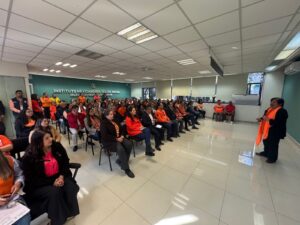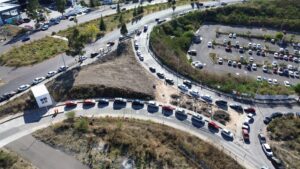Land is real estate that is exclusive of any buildings or other assets situated on the property. Depending on the terms of a land ownership agreement, the owner may be awarded the right to use all natural resources on and under the land, which may include water rights, fishing rights, mining rights, and so forth. The land is generally not disposed of or converted to cash within an accounting year; therefore, land cannot be classified as a current asset and thus is a long-term asset. Further support for the cost principle is the accountants’ going concern assumption. A company is assumed to be continuing in business and will not be liquidating. If your company bought the land for possible expansion, its cost is more relevant than the amount the company could get if it were liquidating.
Since the machinery and equipment will not last forever, their cost is depreciated on the financial statements over their useful lives. A balance sheet offers internal and external analysts a snapshot of how a company is performing in the current period, how it performed during the previous period, and how it expects to perform in the immediate future. For most companies, land is a strategic asset because it doesn’t go through the wear-and-tear other fixed assets experience. If an organization evolves in a sector where land ownership — and real estate holdings, in general — are key, the business must find ways to secure good deals on strategically situated parcels.
An asset’s cost minus its accumulated depreciation is known as the asset’s book value or carrying value. Land built or designated for business uses, such as office buildings, retail establishments, and industrial facilities, is commercial real estate. This may refer to payroll expenses, rent and utility payments, debt payments, money owed to suppliers, taxes, or bonds payable. After enrolling in a program, you may request a withdrawal with refund (minus a $100 nonrefundable enrollment fee) up until 24 hours after the start of your program. Please review the Program Policies page for more details on refunds and deferrals. Updates to your application and enrollment status will be shown on your Dashboard.
What is loose tools account and treatment in final accounts?
The company’s leadership adopts proper bookkeeping procedures to make sure personnel record land-related transactions in proper financial accounts. Financial managers report land as a long-term asset in a corporate balance sheet. Balance sheets are one of the most critical financial statements, offering a quick snapshot of the financial health of a company. Learning how to generate them and troubleshoot issues when they don’t balance is an invaluable financial accounting skill that can help you become an indispensable member of your organization.
We expect to offer our courses in additional languages in the future but, at this time, HBS Online can only be provided in English. We offer self-paced programs (with weekly deadlines) on the HBS Online course platform. A balance sheet must always balance; therefore, this equation should always be true. Harvard Business School Online’s Business Insights Blog provides the career insights you need to achieve your goals and gain confidence in your business skills.
Companies that report on an annual basis will often use December 31st as their reporting date, though they can choose any date. Take self-paced courses to master the fundamentals of finance and connect with like-minded individuals. Our mission is to empower readers with the most factual and reliable financial information possible to help them make informed decisions for their individual needs. We follow strict ethical journalism practices, which includes presenting unbiased information and citing reliable, attributed resources. This team of experts helps Finance Strategists maintain the highest level of accuracy and professionalism possible.
The Language of Business
For example, a fast-food chain may establish a “land scouting” group to survey vast geographical expanses and pinpoint the best locations for new stores. Failure to do so could invite investor anger, and the company might experience a market share reduction down the road. Besides, external financiers may lend a plaintive tone to an already difficult situation by bidding the company’s shares down.
- As with assets, these should be both subtotaled and then totaled together.
- The balance sheet’s liabilities section includes current and long-term liabilities, such as accounts payable, loans, and mortgages and equity section.
- Then, current and fixed assets are subtotaled and finally totaled together.
- Explore our finance and accounting courses to find out how you can develop an intuitive knowledge of financial principles and statements to unlock critical insights into performance and potential.
- You can learn more about depreciation expense and accumulated depreciation by visiting our topic Depreciation.
The $1 million difference is recorded as the intangible asset goodwill. Land refers to the land used in the business, such as the land on which the production facilities, warehouses, and office buildings were (or will be) constructed. The cost of the land is recorded and reported separately from the cost of buildings since the cost of the land is not depreciated. While long-term investments in marketable securities are initially recorded at their cost, the amount of these investments will be adjusted (increased or decreased) to report their market value as of the date of the balance sheet.
Therefore, the recorded amount of goodwill is not amortized to expense. Instead, each year the recorded cost of the goodwill must be tested to see if the cost must be reduced by what is known as an impairment loss. You can learn more about depreciation expense and accumulated depreciation by visiting our topic Depreciation.
Below liabilities on the balance sheet is equity, or the amount owed to the owners of the company. Since they own the company, this amount is intuitively based on the accounting equation—whatever assets are left over after the liabilities have been accounted for must be owned by the owners, by equity. These are listed at the bottom of the balance sheet because the owners are paid back after all liabilities have been paid. social security and railroad retirement benefits For example, a municipality seeking capital investments to prop up the local economy might write down the values of designated parcels, hoping to attract investors who constantly are on the lookout for cheaper real estate deals. A land owner also might reduce the worth of a parcel if a meteorological event — like a hurricane or tsunami — adversely affects the commercial viability of a parcel or an entire swath of land.
Disadvantages of Owning Land for Small Businesses
A company’s balance sheet is one of the most important financial statements it produces—typically on a quarterly or even monthly basis (depending on the frequency of reporting). Understanding and analyzing key financial statements like the balance sheet, income statement, and cash flow statement is critical to painting a clear picture of a business’s past, present, and future performance. Knowing what goes into preparing these documents can also be insightful. Want to learn more about what’s behind the numbers on financial statements? Explore our eight-week online course Financial Accounting—one of our online finance and accounting courses—to learn the key financial concepts you need to understand business performance and potential.
This financial statement is used both internally and externally to determine the so-called “book value” of the company, or its overall worth. A balance sheet is one of the primary statements used to determine the net worth of a company and get a quick overview of its financial health. The ability to read and understand a balance sheet is a crucial skill for anyone involved in business, but it’s one that many people lack. The amount of a long-term asset’s cost that has been allocated to Depreciation Expense since the time that the asset was acquired. Accumulated Depreciation is a long-term contra asset account (an asset account with a credit balance) that is reported on the balance sheet under the heading Property, Plant, and Equipment.
To do this, you’ll need to add liabilities and shareholders’ equity together. Depicting your total assets, liabilities, and net worth, this document offers a quick look into your financial health and can help inform lenders, investors, or stakeholders about your business. Based on its results, it can also provide you key insights to make important financial decisions.
The line buildings and improvements reports the cost of the buildings and improvements but not the cost of the land on which they were constructed. For financial statement purposes, the cost of buildings and improvements https://www.bookkeeping-reviews.com/journal-entry-for-accrued-income-or-income-due/ will be depreciated over their useful lives. The balance sheet’s liabilities section includes current and long-term liabilities, such as accounts payable, loans, and mortgages and equity section.





